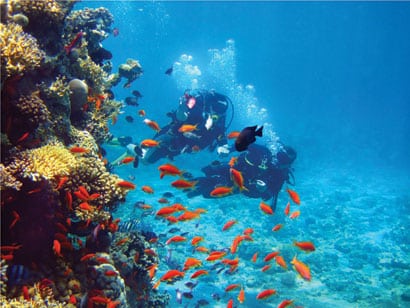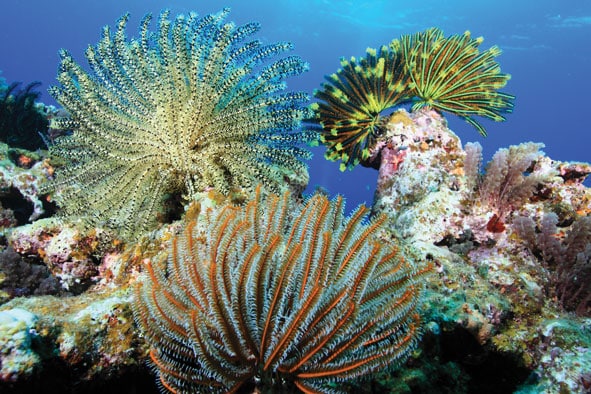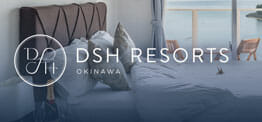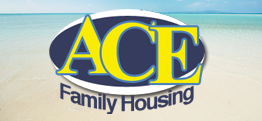
Scuba Diver on Coral Reef
The summer diving season is coming to a close in Okinawa and that means some of the best diving of the year is upon us. The cooler fall months allow for more comfortable shore dives with cooler temps on those hikes to the site while water temperatures are still warm enough for rash guards or thin wet suits only for thermal protection. The crowds of summer will also diminish as the summer tourist rush tapers off, making it the perfect time to dive in Okinawa. Reef Encounters will still be running daily guided beach and boat dives to explore the variety of sites around Okinawa and the surrounding islands. Dive classes and specialty courses are also offered year round to improve your diving skill and get ready for those more advanced dives. If you have not become certified, now is the perfect time with warm water temperatures and the winds of typhoon season starting to pass; the calm seas make for perfect learning conditions for the beginner diver. Reef Encounters has classes starting daily so contact us to get started right now.
We will be featuring a dive tip of the month on our page from now on so here we go with tip #1: Proper weighting- one of the most common mistakes new divers and many experienced divers make is over weighting. Carrying too much weight on your dive results in many problems to include: fast air consumption, erratic buoyancy control, poor trim, and poor finning technique. As you gain experience you will be able to dive with less weight, so do a weight check every 10-20 dives especially when new and always when using new gear or exposure suits. To start the dive you can check your weight by getting in the water with all your gear and weight, remove all the air from your BC- make sure its completely empty. You should float slightly with a full breath of air in your lungs and when you exhale you should sink below the water. This should be good to go to start a dive. To fine tune your weighting at the end of the dive with 500psi/40 bar of air in your tank you should be able to hover at 15ft/5m with no air in the BC at all. If you are still sinking take some weight off or if you float to the surface at the end of the dive add a little.
When purchasing or setting up a weight belt it is best to use multiple small weights instead of 2 large weights so you can fine tune your buoyancy and trim. Use BC trim pockets to allow you good position in the water if you have them. If you are having problems with weighting or trim come by Reef Encounters and schedule a private buoyancy/weighting clinic with one of the professional instructors to get you squared away and enjoying those dives even more.
See you underwater!!
![]()



















